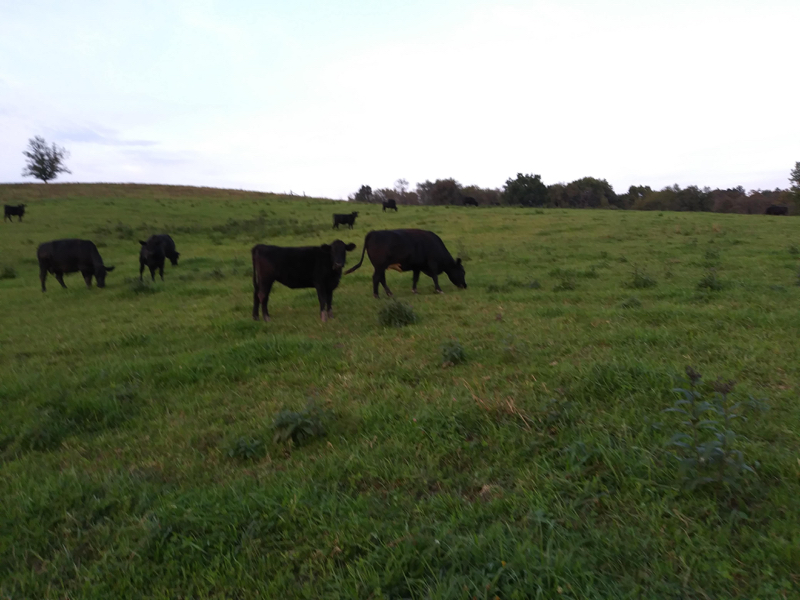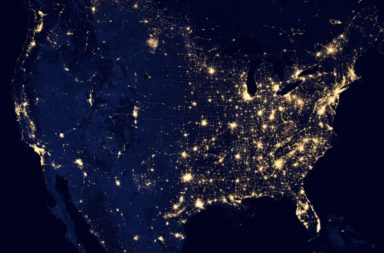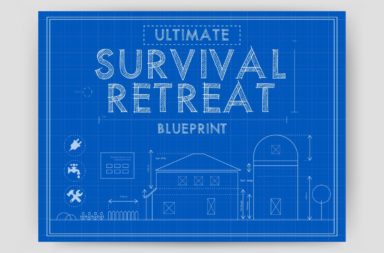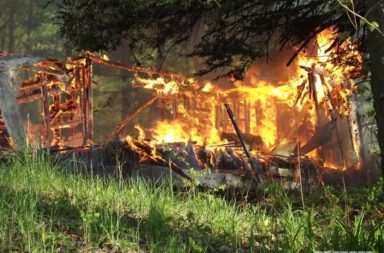Cattle have been raised in the United States for several hundred years and have a wide variety of purposes that they can be used for. The most common use of cattle is for a food source as the are a large animal and produce a lot of meat from just a single animal. However there are many other uses for cattle on your land. Cattle have had many different uses throughout the years, meat and milk production are the two main benefits from raising cattle.
Different breeds are designed specifically for meat or milk production. However, these are not the only benefits of cattle ownership for preppers. Cattle can be used for a wide variety of different things around your survival homestead.
Ways To Use Cattle On A Prepper Retreat
- Cattle can be tamed and used to pull carts and other sorts of farming equipment, almost like a horse.
- Cattle that are slated for butcher can be used for much more than just meat, the hide makes good rugs, bags, equine tack, moccasin, and other leather items.
- The hooves and horns can used as sharp items almost like a knife of sorts.
- The internal organs are used in producing many different types of medicines and many other products.
- Another benefit of raising cattle on your survival homestead is that the calves can be sold, or traded for goods and services.

A cow calf pair in the field grazing. These are black angus cattle.
Both meat and dairy cows will reproduce once a year and will usually have one offspring, however twins are starting to become slightly more common. These offspring can be sold no matter which type of cattle you choose, however there are many differences when you go to actually sell the offspring.
Beef cattle offspring are usually sold at a higher price and at around six to seven months of age. Dairy cattle offspring are usually sold at a few days old and will require the new owner to feed the calf a milk replacer, this is done so that the milk from the cow can be used to create dairy produces.
Overall, the addition of cattle to your survival homestead would be a grand adventure for you as there are many challenges as well as rewards that come from owning cattle.
How To Choose Cattle For A Survival Homestead
There are two major types of cattle and choosing the right type of cattle for your homestead will be very important. If you are looking to raise cattle mostly for meat, then you would need to consider the different types of beef breeds of cattle.
If you are looking to raise cattle to produce mostly dairy produces and very minimal meat, then you should consider the different types of dairy cattle breeds.
Beef cattle are usually much stouter that a dairy and they have very heavy muscling, as this is what is used for meat when the animal is slaughtered.
Beef cattle are usually kept on an open pasture in the summer and then fed hay or silage in the winter. The calves are usually kept until they are at the desired butcher weight, or they are around 500 pounds and then they are sold.
Top 5 Breeds Of Meat Cattle
1. Black and Red Angus
Black Angus cattle are very widely known for their all black coat color and their smaller size. The red variety of this breed is the recessive color and they are a newer breed, and sometimes more sought after than there black counterparts.
This breed of cattle is naturally polled (this means that they do not have horns) and this is a very sought after trait. Angus cattle are the most popular breed of cattle in the nation and their meat is the most marketed type of beef in the nation. These cows are very popular do to their small size and their marketability. Angus cattle would make a great addition to your survival homestead because they are an extremely hearty breed of cattle. Black angus cows make great mothers to their young. They will take care of most of the work as long as they are fed properly and taken care of well themselves.
2. Charolais
Charolais are large white cattle that have an exceptional musculing, that is a great quality for a beef cattle to have. These cattle are most commonly crossed with other breeds to help improve their temperament and to aid in the other breeds muscle structure. Overall charolais cattle are a great beef cow that may be a little intimidating to raise as then can require lots of work and feed because they are so large.
3. Herford
Hereford cattle are a smaller built breed of cattle and are a very deep red with five white points on them. Herefords are a very unique breed as they come in some interesting varieties. Herefords can be polled (born without horns) and they can be horned. This can add some challenges when raising them as horns are quite sharp and make very good weapons.
There is also a newer version of the Hereford breed that is called a Black Herford, like the name implies these cattle are black were as the standard herefords are red.
4. Simmental
Simmental cattle are a large breed of cattle that can range in color from mostly a red color to golden, as well as black, the one thing they all have in common is that they have some white on them. The white is usually around the shoulders and they usually have a white face.
This breed of cattle also has very good muscling as well as mothering traits that are top notch. This is a large breed of cattle and usually larger breeds require more finish time – period it takes for the animal to reach butcher weight. However Simmental cattle have very quick finishing rates and produce a large quantity of meat.
5. Limousin
Limousin cattle are a reddish brown color, and can be black with a brownish tinge to their coats. This breed of cattle makes an exceptional one for your homestead as they are good mothers that produce a medium large calf, and the calves are very good finishers and they finish quite quickly. Limousin cattle are a British breed and in England they an not naturally polled, however in the United States they are most commonly polled.
Best Dairy Cattle Breeds For A Prepper Homestead
Dairy cattle are usually smaller in build and the look a little leaner than there beef counterparts. They are unique in that they will require milking twice a day. There are two main ways to do this: one is by hand and the other is by machine.
Dairy cows does not actually raise the calf. The owner would be responsible for feeding the calf with a milk replacer, or selling the calf – this is a time consuming job that must be done properly and on time or the calf could perish quickly
Top 5 Dairy Cattle Breeds For Preppers
1. Holstein
Holstein cattle are a very tall black and white breed of cattle that have a recessive red gene that will result in some of them being red and white. Holistens are a very good milking cow. Each day they will produce between 2 and 3 gallons of milk.
If you are not going to be making plenty of other dairy products then you should consider a smaller dairy breed.
2. Jersey
Jersey’s are a smaller breed of dairy cattle that are most commonly known for their high butterfat (the amount of fat present in milk) content. This, along with the fact that Jerseys are a small breed of cattle, makes them easy to keep and feed. They are also known to boast an extremely, docile temperament. Jersey cattle are a light brown color and usually have a darker face and get slightly lighter as you go towards the tail.
3. Brown Swiss
Brown Swiss cattle are a darker almost chocolate brown color, with a white muzzle and blue eyes. These cattle are slightly larger than a Jersey and they an exceptionally hearty breed. Brown Swiss are a favorite of many dairy farmers due to their extreme weather and climate resiliency
4. Guernsey
Guernsey cattle are a light red to a yellowish color and their coat also has white patches. They are largely considered a most attractive looking breed of dairy cattle. Guernsey cattle make good milkers and usually begin producing milk at a very early age.
5. Ayrshire
Ayrshire cattle are a larger read and white breed of dairy cattle. This breed is known for their large and very distinct horns. They are significantly rugged and adapt to many different types of dairy housing pens and shelters. Ayrshires also have very good udders and are not prone to many various milking illnesses.
Keeping cattle on the survival homestead will provide you with a sustainable and steady source of milk and protein, but they also take up a lot of space. Feeding the cattle over the winter, unless you live in a climate that does not have four true seasons, means you have to stockpile copious amounts of both hay and grain…and be able to secure more during a long-term disaster, or risk losing your entire herd within weeks.


